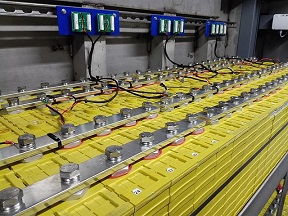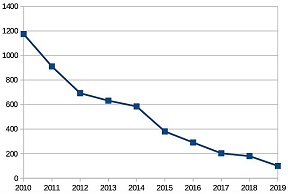Apparently, there is a major obstacle for the energy transition: cost. We don’t always have solar and wind energy at hand, but there always is demand for electricity. Growing, as well – ongoing, as we will install more electric heating (with heat pumps) and electrically powered transport. We need mega investments in the grid in order to deliver sustainable electricity to the end user. Europe might even need to source its energy in the Sahara. Or would local optimization prevent that?

Kaz Schonebeek wrote an interesting article on this subject on the site change.inc (in Dutch). Its conclusion: we can do this – although it might not be easy. And for this to make economic sense, we need to take additional measures. Among others, we need to change the law.
An optimal system
The basic idea is simple. Solar and wind energies are variable in nature. For them to power our energy system, we need to store temporary excesses. Sound reasoning would put this storage capacity in the neighbourhood of production capacity. Local optimization! It would save us expensive grids. Moreover, it would lend more resilience to the energy system.
Local optimization might be done in each household. But because households use electricity at different times, we could better do this at the level of a neighbourhood. By constructing a local energy system, to which households can deliver electricity and from which they can source it. This would better tune supply and demand of electricity to each other. The would be less need to construct connections; and moreover, we would counteract net congestion.

A local energy system
In the Dutch village of Altweerterheide, such a system of local optimization has been constructed. The local energy cooperative hosts a solar park consisting of 6,500 solar panels and three wind turbines. Near the solar park, the cooperative owns three containers. One for a large lithium-ion battery, one for the adaptor; the third container is the information centre on the installation. But here, we run into the first obstacle. It is not allowed to exchange electricity between residents along the grid. Therefore, the battery supplies its electricity to the grid – at a fee, of course. That fee is the centrepiece of the commercial model.
Strictly speaking, we could apply local optimization at a very small scale; with local users directly connected with a local battery. The members supply electricity to the battery and get this in return as well, for instance if they need electricity for charging their electric cars. But this system doesn’t add up to a positive business case. In order to achieve this, it needs a subsidy.
Local optimization
But there may be another opportunity. If the local battery is smart and fitted to be able to deal on the electricity market, it can earn money. By quickly playing into shortages or excesses on the grid. But this earning model will run into limitations. Commercial players could connect large-scale battery systems to the grid, performing the same function. At a lower cost.
But there may still be another opportunity for building a proper earning model: the prevention of congestion on the grid by peak shaving. If there is too much production on the grid, the battery will store electricity; it will deliver this to the grid again when demand is high and supply falls short. But at the moment, the benefits of such a system will end up in the hands of the grid owners. They need to construct less extra grid capacity, and do not have to reimburse the battery owners for lending them this service.
Regulation
And then, regulation stands in the way of finding the best system. As long as we produce and use energy ourselves, we will not pay an energy tax on such a transaction. But a collective battery will serve the public supply – and as a consequence, in the Netherlands one needs to pay 15 cents tax per kilowatt-hour of electricity bought from the battery. On top of the cost of the battery itself.
The grid owner would be the logical party for construction and exploitation of such a local battery. But it cannot do that; for the paw stipulates that grid owners do not have the right to sell electricity. It may not be impossible to keep a local battery running and profitable; but we would have to delve deeply into regulation.
The future energy system
Nevertheless, local optimization is the logical key to the future electricity system. Decentralized energy storage will become ever more important, as the energy itself will be produced ever more locally. Therefore, we need to develop better laws and rules. We need to stimulate battery storage instead of opposing it. For instance, we could oblige grid authorities to connect more production and demand to a constant grid capacity. Forcing them to develop ways and means to store electricity within their system.
And of course, we don’t have to confine ourselves to electricity in storage capacity. Heat storage could be part of a local energy system as well. We need local optimization! Both for the reliability and the cost-effectiveness of the future energy system. High time for us to start developing local storage systems, full speed!
Interesting? Then also read:
Local optimization, against congestion on the grid
Integration of PV into the economy
From energy transition to precision economy
